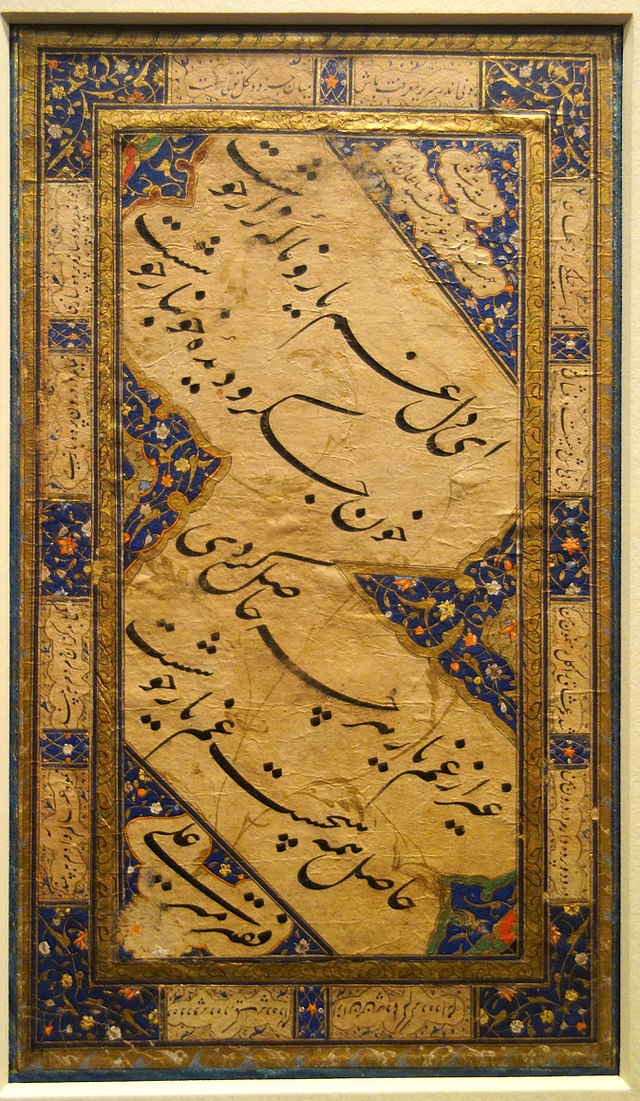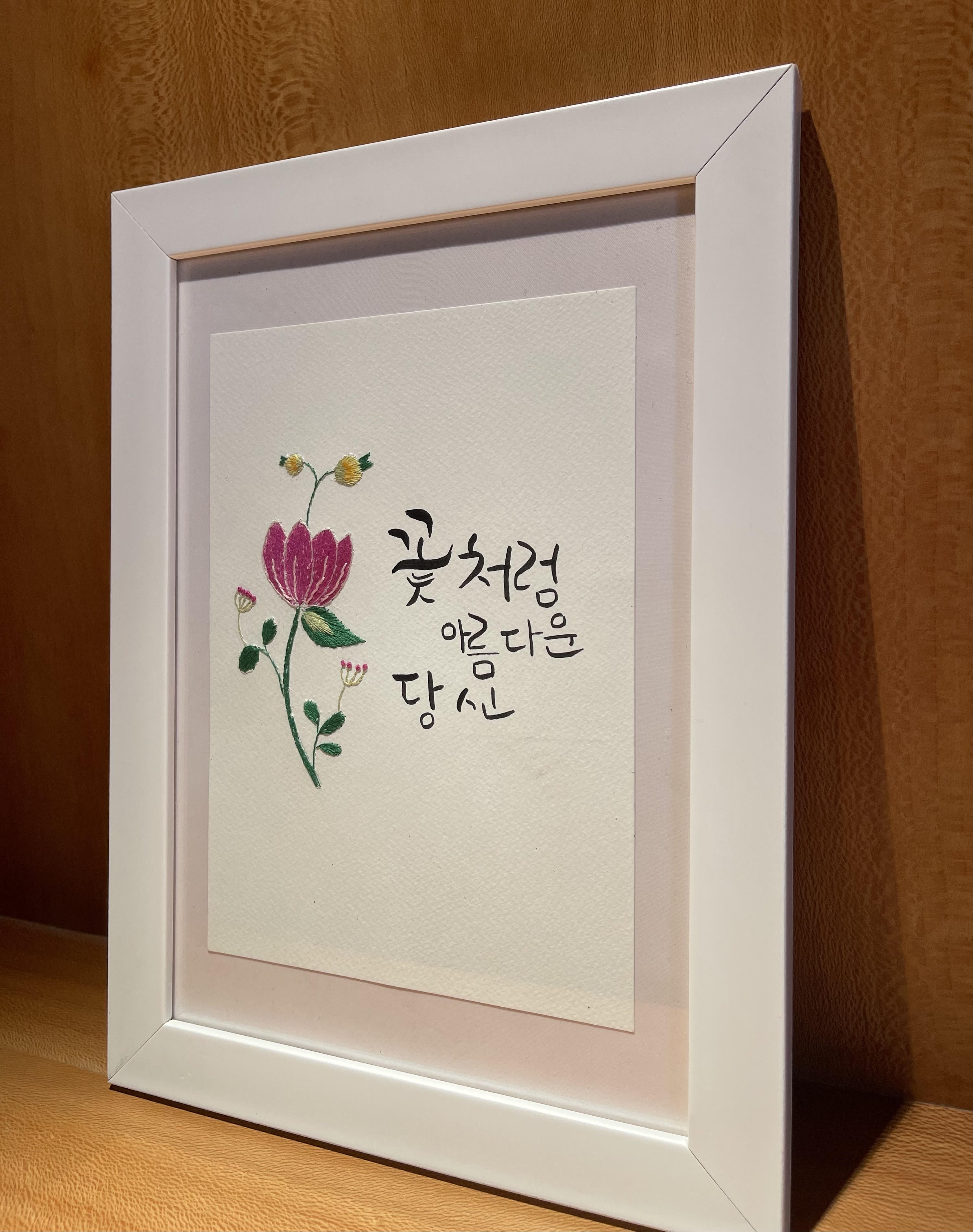Calligraphy: A Shared Legacy of Beauty and Spirituality in Korean and Iranian Cultures
2025-01-22Calligraphy, the art of beautiful writing, holds a significant place in both Korean and Iranian cultures. Although both traditions emerged in vastly different historical and cultural contexts, they share deep-rooted spiritual and artistic significance. This essay explores the rich histories, techniques, and cultural implications of Korean and Iranian traditional calligraphy, ultimately comparing their unique characteristics and common threads.
Historical Background
Korean Calligraphy traces its origins to the introduction of Chinese characters during the Three Kingdoms period. The art form flourished particularly during the Goryeo Dynasty (918-1392), when Confucianism significantly influenced Korean aesthetics. Over time, the creation of the Korean alphabet, Hangul, in the 15th century under King Sejong the Great, shaped the calligraphic tradition, introducing a more modern script that allowed for greater expression of Korean identity. While the early focus was on Chinese characters, Korean calligraphy eventually embraced a mixed form, blending Chinese characters with Hangul, creating an intricate style known as Gugyeol.

On the other hand, Iranian Calligraphy has ancient roots, dating back to the Islamic Golden Age. It emerged alongside the rise of Islamic civilization and was closely tied to the religious and cultural developments of the time. The art of Persian calligraphy became an essential aspect of Islamic art, particularly in the transcription of the Qur'an and Persian poetry. Among the most famous styles is Nasta'liq, a cursive script that flourished in the 14th century and remains an iconic representation of Persian calligraphy to this day.

Techniques and Tools
Both Korean and Iranian calligraphy require the use of specialized tools, such as brushes made from animal hair, ink sticks, and fine paper. However, their techniques and approach to writing differ significantly.
In Korean Calligraphy, the brushstrokes are intended to reflect the rhythm and natural flow of the artist's hand, emphasizing the balance between ink and paper. The brush is guided by the concept of "Ji," the natural force or spirit of the brushstroke. The calligrapher’s emotional state is often mirrored in the strokes, which carry personal expression. Korean calligraphy also uses the four treasures of the study—brush, ink stick, ink stone, and paper—each representing a different aspect of the scholar’s inner world.
Iranian Calligraphy, particularly in the Nasta'liq style, focuses on meticulous, controlled strokes that create elegant, flowing letters. The goal is to achieve harmony between the written word and the spirit behind it. The technique involves precise positioning of the brush and is often accompanied by decorative elements, such as intricate geometric patterns or floral motifs. The pen (known as "Qalam") is held at a specific angle, allowing the calligrapher to produce the characteristic slanted, elongated forms of the script. The beauty of Iranian calligraphy lies not just in the fluidity of the writing but also in the art of combining words with meaning, often incorporating famous Persian poetry or Qur'anic verses.
Aesthetic Principles
Korean calligraphy is heavily influenced by Confucianism and Buddhism, emphasizing balance, harmony, and the reflection of nature. The calligrapher is encouraged to be in a state of spiritual tranquility, allowing the brush to flow naturally and express the inner state of the artist. The aesthetic principle is rooted in the idea of achieving harmony between human expression and nature, often reflecting elements of the natural world in the strokes. Korean calligraphy is also about simplicity, with an emphasis on negative space and fluid, spontaneous movement.
In contrast, Iranian calligraphy, particularly Nasta'liq, is defined by its elegant and precise forms. It is highly structured, with each letter meticulously crafted to achieve a sense of harmony. The Persian script’s curves are celebrated for their grace and fluidity, but they are also grounded in mathematical precision. Persian calligraphy often aims to convey a deeper meaning, where the form of the script and the words themselves reflect beauty, divine presence, and intellectual rigor.
Cultural Significance
Both Korean and Iranian calligraphy have cultural and spiritual importance that extends beyond mere writing. In Korea, calligraphy was once practiced primarily by scholars and the elite. It was considered an intellectual pursuit that cultivated moral values, patience, and self-discipline. Confucian ideals influenced the way calligraphy was taught and perceived, with an emphasis on introspection and spiritual growth. Over time, Korean calligraphy became intertwined with Korean identity, symbolizing not just writing but also an appreciation for art, nature, and the human spirit.
Iranian calligraphy, deeply tied to Islamic tradition, is often viewed as a reflection of divine beauty. In Islamic culture, the written word holds a sacred status, especially when it comes to the Qur'an. Persian calligraphy became a means of expressing religious devotion, intellectual enlightenment, and cultural heritage. The intricate design of Persian scripts was not only intended for religious texts but also for the beauty of everyday life, decorating mosques, palaces, and manuscripts.
Personal Experience at a Korean Calligraphy Workshop
During my recent experience at a Korean calligraphy workshop held by the Sejong Institute, I had the opportunity to try my hand at this beautiful art form. The workshop offered an introduction to the tools and techniques of Korean calligraphy, and I was encouraged to write both Hangul and traditional Chinese characters. It was fascinating to see how the brush strokes could convey so much emotion and meaning with such fluidity.
I found that the most challenging aspect was learning how to control the brush and ink to achieve the proper balance between boldness and delicacy. It required patience and focus, but the experience of practicing the ancient art of Korean calligraphy gave me a deeper appreciation for its meditative qualities. As I wrote, I could sense the connection between the past and present, feeling the historical weight and spiritual significance embedded in every stroke. Reflecting on this experience, I notice how Korean and Iranian cultures feel close in their appreciation for art, spirituality, and harmony. Both traditions value the written word not just as a functional tool but as a bridge connecting the material and the divine, the past and the present.

The Similarities Between Korean and Iranian Traditional Art
Despite originating in different parts of the world, Iranian and Korean traditional arts share numerous similarities that reflect common values and artistic sensibilities. Both cultures have a rich history of calligraphy, where the written word is considered a form of art and a means to connect with the divine. In both traditions, calligraphy is not just about writing words, but about conveying beauty, emotion, and philosophy.
In both Korean and Iranian calligraphy, balance and harmony are central principles. Whether it's the fluidity of the brushstrokes in Korean calligraphy or the precision of the Nasta'liq script in Persian calligraphy, both seek to achieve a visual harmony that reflects the underlying unity of the universe. Furthermore, both cultures view their calligraphy as a form of spiritual expression. Korean calligraphy is influenced by Confucianism and Buddhism, while Persian calligraphy is deeply intertwined with Islamic spirituality. Both forms aim to transcend the material world and convey higher meanings through the written word. Additionally, both Korean and Iranian calligraphy are highly respected intellectual pursuits. Practitioners of both traditions are trained to achieve mastery not only in technique but in the cultivation of moral and philosophical insight. This intellectual dimension of calligraphy demonstrates how both cultures value the combination of art, intellect, and spirituality.
Comparison and Conclusion
While Korean and Iranian calligraphy share the goal of artistic and spiritual expression, they differ significantly in their approaches and cultural contexts. Korean calligraphy emphasizes emotional expression and harmony with nature, often marked by flowing strokes that convey the inner feelings of the artist. In contrast, Iranian calligraphy is more formal, with precise, controlled movements that reflect intellectual and religious depth. The aesthetic principles of both calligraphies emphasize balance and beauty, but while Korean calligraphy tends to embrace spontaneity and simplicity, Iranian calligraphy thrives on intricate details and elaborate forms. Ultimately, both traditions are highly respected and carry profound meaning within their respective cultures. They not only serve as artistic expressions but also as cultural symbols that connect the present with the past. Whether through the natural rhythms of Korean brushwork or the flowing elegance of Persian letters, both calligraphic traditions are testaments to the enduring human desire to express beauty, spirituality, and intellectual thought through the written word.
How about this article?
- Like14
- Support2
- Amazing1
- Sad0
- Curious0
- Insightful0


